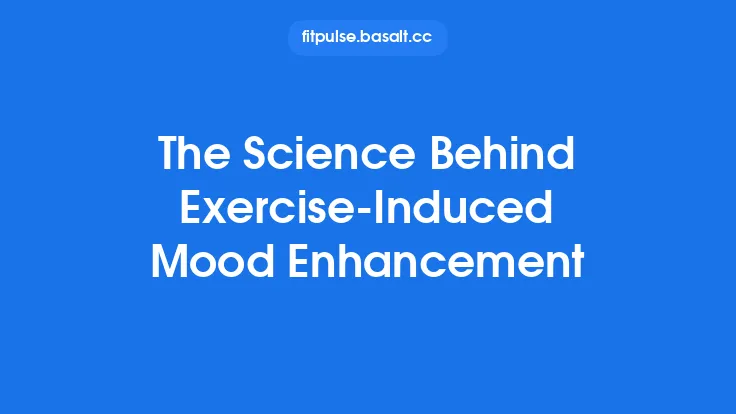Proprioceptive Neuromuscular Facilitation (PNF) is often celebrated for its impressive gains in range of motion, yet the true engine behind those gains lies in the nervous system. When a stretch is paired with a brief, controlled contraction, a cascade of neural events unfolds—altering how muscles sense length, how reflex pathways are modulated, and how the brain interprets discomfort. By dissecting these mechanisms, we can appreciate why PNF consistently outperforms passive stretching in flexibility development and how the same principles can be harnessed across sports, movement disciplines, and everyday life.
The Foundations of Proprioception
Proprioception refers to the body’s internal sense of position and movement, mediated by specialized sensory receptors embedded within muscles, tendons, and joint capsules. The two primary contributors are:
- Muscle spindles – thin, intrafusal fibers that detect changes in muscle length and the speed of that change. They fire rapidly when a muscle is stretched, feeding information to the spinal cord and brain.
- Golgi tendon organs (GTOs) – located at the musculotendinous junction, these receptors sense tension generated by muscle contraction.
Both sets of receptors send afferent signals via Ia and Ib afferent fibers, respectively, to the dorsal horn of the spinal cord, where they influence motor neuron excitability. The balance of these signals determines whether a muscle will contract reflexively, relax, or remain neutral during a stretch.
Muscle Spindles, the Stretch Reflex, and Their Modulation
When a muscle is passively lengthened, muscle spindles are activated, triggering the myotatic (stretch) reflex. This reflex serves a protective function: it resists excessive stretch by causing an immediate, involuntary contraction of the same (agonist) muscle. In the context of flexibility training, this reflex can limit the attainable range.
PNF leverages a brief, voluntary contraction of the target muscle to pre‑activate the spindle system. The subsequent relaxation phase benefits from two neural phenomena:
- Post‑activation depression – after a high‑frequency burst of spindle activity, the spindle’s firing rate temporarily diminishes, reducing the stretch reflex’s potency.
- Presynaptic inhibition – the central nervous system can dampen Ia afferent transmission through interneurons, further lowering reflexive resistance.
Together, these mechanisms create a “window of reduced reflexive guard” during which the muscle can be safely elongated beyond its usual limit.
Golgi Tendon Organs and Autogenic Inhibition
While muscle spindles guard against overstretch, GTOs protect against excessive tension. When a muscle contracts forcefully, GTOs fire, sending Ib afferent signals that engage autogenic inhibition—a reflexive relaxation of the same muscle via inhibitory interneurons in the spinal cord.
In a typical PNF sequence, the brief contraction (often at 20–30 % of maximal effort) is sufficient to activate GTOs without triggering a protective shutdown. The ensuing relaxation phase benefits from the lingering inhibitory tone, allowing the muscle to yield more readily to a subsequent stretch. This dual engagement—dampening the stretch reflex while enhancing autogenic inhibition—creates a synergistic environment for increased lengthening.
Reciprocal Inhibition: The Role of Antagonist Muscles
The nervous system is wired to coordinate agonist–antagonist pairs. When an agonist contracts, reciprocal inhibition reduces the excitability of its antagonist via Ia inhibitory interneurons. In PNF, the intentional contraction of the target muscle can indirectly facilitate relaxation of the opposing muscle group, especially when the stretch involves a joint that relies on coordinated antagonistic action (e.g., hamstring stretch with hip flexion).
Although the primary focus of PNF is on the muscle being stretched, the ancillary reduction in antagonist tone contributes to a smoother, more controlled stretch, minimizing compensatory tension that could otherwise limit range.
Central Nervous System Adaptations and Stretch Tolerance
Beyond spinal reflexes, the brain’s perception of stretch‑induced discomfort—often termed stretch tolerance—plays a pivotal role in flexibility. Repeated exposure to PNF stretches can lead to:
- Cortical desensitization – functional MRI studies have shown decreased activation in the anterior cingulate cortex and insular regions after regular PNF training, indicating a lowered pain response to the same mechanical stimulus.
- Motor cortex re‑mapping – the primary motor cortex (M1) can adjust its representation of a muscle’s length, allowing the central command to accept a longer resting length without triggering protective reflexes.
- Enhanced descending inhibition – pathways from the brainstem (e.g., the periaqueductal gray) can increase inhibitory neurotransmitter release (GABA, glycine) at the spinal level, further suppressing reflexive resistance.
These central adaptations are gradual, requiring consistent practice over weeks to months, and they explain why PNF can produce lasting flexibility gains even after the acute neural effects of a single session have subsided.
Neural Plasticity and Long‑Term Flexibility Gains
The nervous system’s capacity to reorganize—neural plasticity—underlies the durability of PNF‑induced flexibility. Two key processes are involved:
- Synaptic efficacy changes – repeated activation of inhibitory interneurons strengthens their synaptic connections (long‑term potentiation of inhibition), making the autogenic and reciprocal inhibition pathways more robust.
- Structural remodeling – chronic reduction in reflexive muscle tone can lead to alterations in the extracellular matrix of the muscle‑tendon unit, indirectly supporting greater length without compromising structural integrity.
Thus, PNF does not merely “stretch” the muscle fibers; it rewires the neural circuitry that governs muscle length regulation, creating a more permissive environment for sustained range of motion.
Practical Implications for Training and Performance
Understanding the neural underpinnings of PNF informs how athletes, coaches, and clinicians can integrate the technique into broader movement programs:
- Timing of neural priming – performing a brief, submaximal contraction just before a dynamic movement can transiently lower reflex resistance, allowing a smoother transition through full range during sport‑specific actions.
- Neuromuscular warm‑up – incorporating PNF‑style activation of key muscle groups can enhance proprioceptive acuity, leading to better joint positioning and reduced injury risk.
- Periodized neural loading – alternating phases of high‑intensity neural facilitation (e.g., stronger contractions) with lower‑intensity sessions can promote both acute gains and long‑term plasticity without overtaxing the nervous system.
These considerations emphasize that PNF is not a static stretch protocol but a dynamic neuromuscular tool that can be strategically deployed throughout a training cycle.
Emerging Research Directions
The scientific community continues to refine our understanding of PNF’s neural mechanisms. Current frontiers include:
- Quantifying afferent firing patterns – using microneurography to directly record Ia and Ib activity during PNF sequences, clarifying the exact timing of inhibitory bursts.
- Neurochemical profiling – investigating how neurotransmitter concentrations (e.g., serotonin, endorphins) shift in response to repeated PNF, potentially linking mood and perceived effort to flexibility outcomes.
- Individual variability – exploring genetic markers (e.g., BDNF polymorphisms) that may predict responsiveness to neural facilitation, paving the way for personalized flexibility programming.
- Cross‑modal integration – combining PNF with visual or auditory cueing to enhance cortical engagement, thereby accelerating central adaptations.
As these studies mature, they will likely yield more precise guidelines for optimizing PNF’s neural impact across diverse populations.
Concluding Perspective
The remarkable flexibility gains attributed to Proprioceptive Neuromuscular Facilitation stem from a sophisticated orchestration of peripheral receptors, spinal reflex pathways, and central brain processes. By temporarily dampening the stretch reflex, amplifying autogenic inhibition, and fostering reciprocal relaxation, PNF creates a neurophysiological “sweet spot” where muscles can be safely lengthened beyond their habitual limits. Repeated exposure consolidates these changes through neural plasticity, resulting in lasting improvements in stretch tolerance and range of motion.
Recognizing PNF as a neural facilitation technique—not merely a stretching routine—opens new avenues for its application in athletic performance, injury prevention, and functional mobility. As research continues to unravel the intricacies of the nervous system’s role in flexibility, practitioners equipped with this scientific insight will be better positioned to harness PNF’s full potential.





